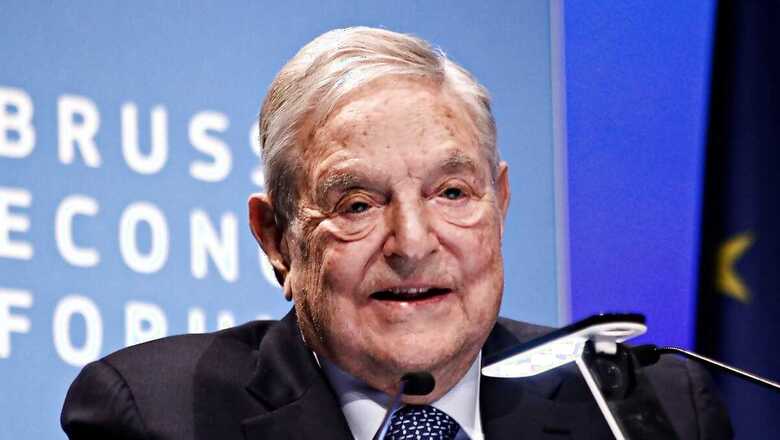
views
On Sunday, External Affairs Minister Subrahmanyam Jaishankar took a potshot at the West, saying it has a “bad habit” of commenting on others. “They (Western nations) somehow think it is some kind of God-given right,” he added. Jaishankar was responding to a question on Germany and United States’ remarks on the disqualification of Congress leader Rahul Gandhi from Parliament.
Yes, there’s an innate tendency in the West to interfere in the internal matters of other countries. But things aren’t just as simple for India, especially in recent years. One has seen on several occasions in recent years — from the CAA and Shahin Bagh agitations to the farmers’ protests — several anti-India forces joining hands to create a scenario of utter despair and widespread chaos, on the lines of a toolkit created by Czech Communist Party theoretician Jan Kozák explaining how a small number of communists gained power in Czechoslovakia through parliamentary manoeuvres.
Explaining Kozák’s modus operandi, David Horowitz and Richard Poe write in their book, The Shadow Party: “The trick was to exert pressure for radical change from two directions simultaneously — from the upper levels of government and from provocateurs in the streets. Kozák called this tactic ‘pressure from above and below’. One way to exert ‘pressure from below’, as Kozák explained, was to fill the streets with rioters, strikers and protesters, thus creating the illusion of a widespread clamour for change from the grassroots. Radicals in the government would then exert ‘pressure from above’, enacting new laws on the pretext of appeasing the protesters in the street — even though the protesters (or at least their leaders) were themselves part of the plot. The majority of the people would have no idea what was going on. Squeezed from ‘above’ and ‘below’, most would sink into apathy and despair, believing they were hopelessly outnumbered by the radicals— even though they were not. Thus could a radical minority impose its will on a moderate majority, even under a democratic, parliamentary system.”
India, too, is currently facing pressure for radical change from two directions, though with a difference: While the “provocateurs in the streets” carry Kozák’s toolkit characteristics, the “pressure from above” largely comes from ‘friendly’ Western nations and their agencies. One saw a similar scenario just before the 2019 parliamentary elections. Diverse and divergent forces had then joined hands to make a regime change, though with a limited foreign participation. The same forces are active again — this time they are not just being aggressive and desperate, but also their activities are far more coordinated and purposeful.
In all this the role of the Opposition, especially the Congress, has been quite disappointing — and disturbing. The grand old party, which has been in political wilderness for the past nine years and still shows no sign of resurgence, seems to be following a scorched-earth policy. It becomes obvious when Rahul Gandhi goes abroad and speaks at an international forum: He paints a picture of India that is dark: As a failed democracy, fraught with caste and communal conundrums, and worse, facing an existential crisis under Prime Minister Narendra Modi. He willfully forgets that he is demeaning a flourishing democracy on a foreign soil. The same tendency was on display late last week when Congress leader Digvijaya Singh thanked Germany for “taking note of how the Democracy is being compromised in India through persecution of @RahulGandhi”.
For the Congress-led Opposition, seeped in dynastism, minorityism and morose statism, as well the politico-intellectual ecosystem that both sucked and sustained the Nehruvian order, 2024 is a do-or-die moment. It survived the 2019 tremor, but to expect the same in 2024 would be nothing sort of a miracle.
Foreign countries and their agencies, however, have an altogether different reason for putting India on notice. Here, ironically, the interest of the West and China doesn’t seem to be too divergent. China is alarmed by a new, resurgent India that doesn’t mind being muscular at times. It is witnessing a revolution in India’s infrastructural and military spheres. Particularly disconcerting for the Xi Jinping dispensation must have been the special attention given by the Modi government to the development of the Northeast and other bordering areas, including Ladakh. China, which always keeps an eye on the future, knows well that India by 2030 would not just be a competitive power militarily, but also its $10 trillion economy would be third largest after the US and China. It would be too late to take on India by then. But then India’s politico-military resolve in the past three years — both at the Line of Actual Control and on the diplomatic table — might have made the Chinese ponder if it’s already not too late!
As for the West, it is also caught in a similar quandary. Of course, it wants India to be a bulwark against the growing Chinese hegemony, but it is equally wary of its rise as a global power. It doesn’t want India to be too big to finally escape the American orbit. The Western unease with rising India is clearly manifested in the way the mainstream media, the academia and the entrenched bureaucracy of the West respond to the India story. After the recent USCIRF report that has once again questioned India’s democratic and secular credentials, there comes the World Happiness report 2023 that ranks India at the 126th position out of 137 countries it surveyed, below Pakistan, Sri Lanka, and even Ukraine! Had the Taliban not been ruling Kabul, Afghanistan could also have found favours with its researchers!
No doubt, a part of the Western institutional unease predates Prime Minister Modi, but it’s also obvious that there’s growing nervousness in the West about the new, assertive India that is focused on finding its place among global powers. When so many experts at this year’s World Economic Forum in Davos described India as a “bright spot” on the world stage, it is bound to generate envy. The Western reaction has a geostrategic aspect as well: If there is a Chinese fear that a $10 trillion Indian economy would be too big to swallow, then there’s also a growing apprehension in the West that India in that case won’t need the Western support to escape China’s hegemonistic designs and thus would move out of the American orbit. That would decisively shift the global power apparatus to the East, much to the charge-in of the West. This explains the rising bad press for the India story in the West, and also the occasional anti-India posturings by Western governments led by the US, Britain, Germany, et al. The growing anti-India footprints of Khalistani and Islamist forces in so many Western capitals too hint at the same direction.
If such Western subversions against India can be given a face, it would be of George Soros. His Open Society Foundation has facilitated coups and rebellions in many countries, almost always in the name of democracy. In a 1995 New Yorker profile, Soros conceded that the “subversive” mission of his Open Society Foundation (OSF) required him to wear a variety of masks. “I would say one thing in one country, and another thing in another country,” he said with laughter. This two-faced nature was evident when he first denied any hands in the November 2003 uprising that toppled Georgian President Eduard Shevardnadze, but a few months later he reportedly told the Los Angeles Times: “I’m delighted by what happened in Georgia, and I take great pride in having contributed to it.”
Soros is on record saying that the rise of India under Prime Minister Modi troubles him. And his association with anti-Modi forces is no secret, with the OSF accused of funding both anti-CAA and anti-farm laws protests in India. His role got further magnified when one saw Salil Shetty, the vice president of OSF India, joining Rahul Gandhi during his recent Bharat Jodo Yatra. The West is playing a dangerous, Soros-ian game in India — and Rahul Gandhi’s Congress shouldn’t in any way be a part of it!
Soros is the link that joins the Western subversive players, including the Deep State, with India’s internal disruptive elements — the connect between the “pressure from above and below”. The challenge for democratic India, therefore, is immense, and it is only bound to get more intense as the country inches closer to 2024. The good part is the Government of India is aware of the conspiracy to dislodge it, under the cover of democracy. What may help India is the fact that its enemies have nothing in common except hatred for the civilisational idea of Bharat. Soros, after all, plans to usher in his model of ‘democracy’ in India by unleashing the hidden hands of capitalism to bring together the disparate, violent and nihilistic ideologies of Islamism, Khalistanism and Communism. Nothing can be more hypocritical, deceitful and dangerous than this.
The author is Opinion Editor, Firstpost and News18. He tweets from @Utpal_Kumar1. Views expressed are personal.
Read all the Latest Opinions here

















Comments
0 comment